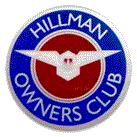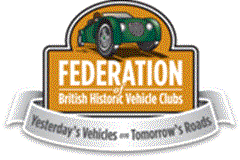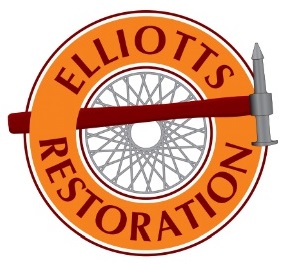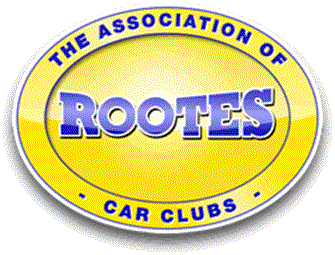- HISTORY OF THE HILLMAN MOTOR
COMPANY
The Early Years of Hillman Cars
During the 1860’s Josiah
Turner and James Starley formed the Coventry Sewing Machine Company
and recruited skilled engineers from the London area to join
them, one of these engineers was a man named William Hillman.
In 1869 the company changed its name to Coventry Machinists Company
Ltd and like many other manufacturers in the area embarked on
producing velocipedes. In 1870 William Hillman and James Starley
patented a new bicycle called the “Ariel” and by 1885
William Hillman was a partner of the bicycle manufacturer Hillman
Herbert and Cooper producing a bicycle called the Kangaroo. Hillman's
new company soon established itself, and before the turn of the
twentieth century, Hillman was a millionaire.
-
- With wealth came the means to fulfil Hillman's
next ambition: to become a car producer. Hillman had moved into
Abingdon House in Stoke Aldermoor near Coventry and decided that
a sensible plan would be to set-up a car factory in its grounds.
-
- A history of the Rootes family.
Standing among the bicycles in
his workshop, Mr William Rootes, father of two boys named William
and Reginald, decided that the time had come for him to start
selling the noisy machines which were frightening the horses
in the Kentish lanes around his home. "There's a future
in motor cars," he said.
-
- The time was the turn of the century and
Mr Rootes was a better prophet than he knew. Motor cars were
to become one of Britain's greatest industries and his two sons
were destined to emerge as industrial leaders and as builders
of their own motor empire.
-
- The decision taken by Mr Rootes that day
in his shop at Hawkhurst, Kent, was the seed from which grew
the Rootes Group, an assembly of companies formed for the manufacture,
distribution, sales and service of cars and commercial vehicles.
Lord William Rootes and Sir Reginald Rootes, the sons of the
Kentish bicycle manufacturer, became Chairman and Deputy Chairman
of the group
-
- William Rootes, the father of William Edward,
later Lord Rootes, was not a wealthy man, but a small-time business
man who ran a bicycle shop at Hawkhurst in Kent. Believing that
both his sons, William and Reginald, should start their career
with a good education, he insisted that they were sent to Cranbrook
School. By the time they were ready to leave school at 16, he
had prospered, adding a motor agency to his bicycle shop, but
neither son decided to join the family business, each preferring
to go his own way. William Edward started his career as a penny
an hour pupil at Singer Motors Ltd.; little knowing that he would
eventually own this company.
-
- During the 1914-18 War he served as a lieutenant
in the R.N.V.R. and in 1917 he was given a special demobilisation
in order to pioneer a new development for that time - the establishment
of a plant at Maidstone to enable aeroplane engines to be repaired
instead of being scrapped. The war ended before this was fully
operative. He then contacted his brother Reginald, who by this
time had a promising career as a civil servant at the Admiralty,
and talked him into joining him in partnership in order to re-establish
the car sales firm of Rootes Ltd.
-
- In 1919 Reginald decided to join his brother
at Maidstone, where they started to build an empire. Reginald
was a great administrator while William Edward was the salesman,
showing an uncanny ability for assessing future trends in public
taste. By 1926 they had acquired offices and showrooms in the
heart of London's West End, at Devonshire House. Within a matter
of months they had acquired other branches in various parts of
the country and become the largest motor distributing company
in Europe. As they prospered, many well known and old established
firms in the motor industry began to feel the impact of economic
recession. But while some companies closed down, the brothers
accepted the challenge. In 1928, the Rootes brothers were the
largest distributors in England. The brothers saw the opportunity
to go into volume manufacturing production.
-
- Karrier Motors was acquired and so was Clement-Talbot
Ltd. British Light Steel Pressings followed in 1937 and a year
later the Sunbeam Motor Car Company Ltd., was taken into the
Rootes Group and merged with Clement-Talbot Ltd
-
- For these companies this was a new era. Instead
of separate plants with resources insufficient to meet the demands
of extending and changing markets, they were now part of a strong
centralised organisation into which each dovetailed smoothly.
By cutting costs and centralising control in a manner ahead of
their time, William and Reginald Rootes had formed a group which
was a powerful, almost self-contained giant.
-
- The Rootes Group
The Rootes Group was formed by
the acquisition of Humber Ltd, Hillman Car Co and the Commer
Commercial Vehicles Company. These three companies were failing
fast, due to outdated plant and production methods, and gave
the brothers a chance to put their ideas into reality. The task
facing the brothers was that of turning failure into success
- and they accepted the challenge.
-
- In 1931 the Hillman Wizard was launched as
a new car for world markets. Although it met with only limited
success they were not deterred, and it did give them time to
unfold their ideas and to straighten out the firms they had acquired.
-
- By 1932 the Rootes Group was taking shape
and they launched another car, the Hillman Minx, which turned
out to be an immediate success. Their ideas had paid off, and
the companies had been saved. Little did they know that the Minx
name was to be used time and time again over the next four decades
and has now become a classic name in motoring history.
-
- Many people have said that when the Rootes
Group acquired these companies the cars they produced were not,
and should not be called Hillman, Humber, Talbot or Sunbeam.
But these companies had been building dated cars on dated machines
and were in urgent need of rationalisation and, indeed, some
form of integration. Apart from this, the brothers made sure
that the identities of the marques were not submerged and this
policy was continued until the Chrysler take-over in 1967. The
luxurious Humbers, the sporting Sunbeams and the quality Hillmans
all retained their distinctive personality.
-
- With the outbreak of the Second World War,
the Rootes factories were turned over to the manufacture of military
vehicles, William and Reginald put their services at the disposal
of the Government. William was appointed Chairman of the Shadow
Industry Plan and he headed the Supply Council of the Ministry
of Supply, he played a prominent part in the application of quantity
production methods to aero-engine and aircraft construction,
not in 1939, but three years earlier. Rootes was the first company
to enter the Government's Shadow Factory Scheme for the volume
manufacture of aeroplanes and aero engines. By the time the sirens
were sounding, Rootes factories were turning out aircraft as
well as vehicles for the R.A.F. and other services.
- But perhaps the work which caused William
Rootes the greatest satisfaction during the war was the part
he played after the terrible night of November 14/15, 1940, when
the Germans dropped 35,000 incendiary bombs, 50 land mines and
1,400 high explosive bombs on the city of Coventry. The task
of leading a reconstruction committee to set Coventry on its
feet again was given to William Rootes. In 1942, as a result
of the raising of Coventry and other prodigious war work, William
became Sir William Rootes, Knight Commander of the British Empire.
-
- Peacetime assessments in 1945 revealed that
the Rootes Group had made one out of every seven bombers produced
in the United Kingdom during the war, 60 per cent of the armoured
cars and 30 percent of the scout cars. It had also built 50,000
aeroplane engines, had repaired 28,000 others wrecked in crashes
or in battle, had repaired more than 12,000 vehicles for the
Army and the Royal Air Force and had assembled 20,000 other vehicles
imported from allied countries.
-
- At the beginning of the war, 17,000 employees
were on the Rootes pay-roll. By the end, one in every hundred
people in Great Britain employed as civilians in the war effort
was working for, or on behalf of, the Group.
- The post war reorganisation saw yet another
challenge for the Rootes brothers; they played a leading part
in organising the motor industry's intensive export drive, and
also established a motor factory in Australia, then rapidly developing
as one of Britain's most valuable markets. By the end of 1946
the plant was already producing cars and trucks for the Australian
market.
-
- The early post-war years saw not only the
establishment of new factories abroad but also the setting up
of new Rootes trading organisations in key overseas markets.
-
- Among these was Rootes Motors Incorporated,
an independent concessionaire company with headquarters in New
York and with a distributing organisation covering all major
American states to meet the increasing demand in the United States
for British cars. In addition, Rootes Motors (Canada) Ltd., another
concessionaire company, with headquarters in Toronto, was set
up in the same year, 1947. Before 1948 the Group had its own
company trading in Belgium and another concessionaire company
was established in Rio de Janeiro, Brazil. Other companies, in
other countries, followed.
-
- The Rootes Group was maintaining factories
with more than seven million square feet of floor space, it had
15 concessionaire companies and many assembly plants overseas.
It exported to more than 160 countries - compared with a pre-war
total of 69.
-
- In 1950, as Chairman of the Society of Motor
Manufacturers and Traders, William Rootes played the major role
in organising the first ever British Motor Show in the USA. Held
in New York that show netted over three million dollars' worth
of exports. Trade with the USA began to escalate and in the six
years from 1951 to 1956 it netted no less than 169 million dollars'
worth.
-
- From 1957 to 1962 this figure had increased
to over 303 million dollars.
-
- In 1959 William Rootes was created a Baron
and became Lord Rootes of Ramsbury.
-
- Despite its size and the scope of its activity,
the Rootes Group was unique among British motor manufacturers
in that it remained a family concern. Lord Rootes' son, the Hon.
Geoffrey Rootes, was Deputy Chairman and Managing Director of
the Rootes manufacturing companies, and the Hon. Brian Rootes,
the second son of Lord Rootes, became Managing Director of Rootes
Ltd., the Group's merchandising company. Mr Timothy Rootes, the
son of Sir Reginald, was Director in Charge of Sales and Service
of the manufacturing companies, covering more than 1,000 dealers
in the U.K. The second generation followed closely in the footsteps
of the first and was prepared to carry on the family tradition
of high quality manufacture and forceful trading.
-
- In 1959 a minority group of Rootes Group
workers had begun to strike at regular intervals, much to the
annoyance of the majority. The workers concerned were from a
Rootes subsidiary company, British Light Steel Pressings Ltd.
of Warple Way, Acton, London. The shop stewards at the Acton
factory first learned how to shout strike when a couple of newly
weds at the factory, who were night shift workers, asked to be
transferred to day shift. This was done and 1,500 workers came
out on strike! At a time when strikes were relatively rare, this
one became known as the 'Honeymoon Strike'.
-
- The Rootes family had begun to regret ever
taking over the firm but at the time it had become necessary
to increase their pressing division, to keep up with the demand
for their vehicles.
-
- Strikes at the Acton factory continued and
on 1st September 1961, 1, 000 workers walked out again, bringing
the total stoppages since 1st January 1961 to 82. These were
crippling the Rootes Group and there was nothing they could do
about it. The strikes, which were mainly unofficial and against
union advice, had caused the loss of over 27,000 man hours at
the Acton factory, which in turn had caused the loss of 17,000
man hours at other factories. This latest strike was called because
of 'fears of extensive short time working and large scale redundancy'.
When management refused to hold talks with the men's leaders
(not the unions), they walked out.
- On Monday, 4th September 1961, the strikers
decided to send delegates to the TUC Annual Conference at Portsmouth,
to try to persuade the TUC to adopt a new national policy in
relation to the car industry. They wanted 52 weeks pay per year
for all workers in the car industry, no matter what the situation.
They also told the TUC that they did not want any interference
by union officials. "We feel this has been allowed to develop
as a local problem because of lack of action from outside and
we think we are in a better position to get a settlement with
our management" a spokesman told Acton Gazette reporters.
He continued, "We don't want the type of assistance the
union officials gave us last time, when we stopped work over
a short time dispute. On the first day we stopped, we were ordered
back to work without anybody considering why we had come out."
The strike delegates achieved nothing at the conference. By 18th
September 1961, the strike had brought the Rootes Group almost
to a standstill with over 6,000 workers from the various Coventry
factories being laid off. Only the non-production line staff
continued to work.
-
- Until now, Lord Rootes had refused to comment
on the strike, but on the 26th September 1961, he made his first
statement to the workers concerned: "Return to work by Thursday
28th September or be sacked." The strikers ignored the threat,
and on Thursday, 28th September 1961, all 1000 workers were sacked.
A recruitment drive was started to replace striking workers.
The strikers objected to this, protesting that the Acton Labour
Exchange was engaged in strike-breaking by sending men down to
the factory for jobs - jobs which, as the committee said: "They
will go back too, once the management accepts to abide by the
rules of the committee." Rootes replied: "We regard
the strikers as ex-employees. We have invited applications for
their jobs. Some strikers have re-applied and we believe others
will follow."
-
- The Rootes Group had complete backing from
all their other employees, from the unions, and from the wives
of the strikers (this was given a great deal of publicity). But
the sacked strikers would not listen, stating that "We are
determined to see it through." As the weeks rolled on, 8,000
workers from other factories were made redundant. Rootes were
now having financial problems, and it was in fact the beginning
of the downfall of the Rootes Empire. Controlled by five men,
the strike had caused irreparable damage to the Rootes Group
and its finances. There was a call for a public enquiry after
it was disclosed that the strike was Communist planned and directed.
By 2nd November 1961, Rootes had found other manufacturers to
supply them with the body panels that should have been produced
at the Acton works. They had also re-engaged 1,750 workers at
their Coventry factories in an attempt to get the production
lines rolling once more. The strikers from what was now labelled
"the dead duck strike" were gradually drifting back,
and by 30th November, Acton's work force was up to 680, 430 of
whom had been strikers. By December 21st 1961, only 120 men were
still out. After a final meeting, they decided to go back, but
Rootes turned them away, giving them £40 compensation as
a token gesture. Only one of the strike committee members was
re-employed.
-
- The dispute may have been over, but it was
only the start of the Rootes Group's problems. Their first priority
was to build up their workforce to enable them to fulfil the
outstanding orders. In November 1962, Rootes announced the total
cost of the Acton strike up until the year ending 31st July.
They showed a loss of £891,088, compared with a profit
of nearly £3 million the previous year. This type of loss
Rootes could not afford. They were already heavily committed
to a new project, the Hillman Imp, and the opening of a new plant
at Linwood in Scotland where it was to be produced. This turned
out to be the biggest phase of expansion in the group's history,
and losses at this time were the last thing Rootes wanted.
-
- On 30th September 1964, Lord Rootes announced
that during October three representatives of the Chrysler Corporation
would be joining the board of Rootes Motors Ltd. - Irving Minett,
Group Vice-president, International Operations of the Chrysler
Corporation, Lovis B. Warren, a director of Chrysler, and Robert
C. Mitchell, President and Managing Director of Chrysler International.
The move followed the acceptance by the shareholders of Rootes
Motors Ltd. of the Chrysler Corporation's offer to acquire 30
per cent of the ordinary voting shares in the company and 50
per cent of the non-voting 'A' shares.
- The first official news of the link came
on 4th June when an agreement was reache
- d in New York by Lord Rootes and Sir Reginald
Rootes with Lynn A. Townsend, President of Chrysler, and George
Love, Chairman of the Chrysler Board, concerning the proposed
acquisition of the shares. Treasury consent to the proposals
was given on 29th July by the Chancellor of the Exchequer, who
at that time was Reginald Maudling.
-
- In the formal letter to shareholders outlining
the offer, issued on 10th August by S.G. Warburg Co. Ltd. on
behalf of Chrysler, Lord Rootes stated that the Rootes board
welcomed the Chrysler approach: in view of the intense and increasing
competition in the motor industry at home and overseas, it was
a logical and desirable step in the future development of the
Rootes Group to become associated with a strong international
organisation such as Chrysler. On 29th September, Warburgs announced
that they had received the necessary acceptances from the shareholders,
and this was followed by Lord Rootes' statement regarding Chrysler
representation on the board of Rootes Motors Ltd. Although it
has never been confirmed officially, it has always been suspected
that this had all come about because of the Acton strike and
Rootes' inability to recoup the losses involved. These may not
have sounded that onerous at the time, but it must be remembered
that the cost of building vehicles was not much less than the
price they were being sold for (to make them competitive) and
that breaking even on any project was a long, slow process.
-
- Lord Rootes kept his workers informed as
to what was actually taking place between Rootes and Chrysler,
and when negotiations finalised the following message was passed
to all his employees were expressing his views on the situation:
"You will all have read about our partnership negotiations
with the Chrysler Corporation which have resulted in this American
motor manufacturer, the third largest in the United States and
indeed in the world, acquiring an interest in Rootes Motors Ltd.
-
- "I would therefore like to take this
opportunity to declare that I and all the other members of the
Rootes Board are confident that this association with Chrysler
will prove to be the prelude to a period of great progress for
the Rootes Group.
-
- "It does not mean that the Rootes family
interests, financial or otherwise, in Rootes Motors will be diminished
in any way but rather that a real partnership is being established
with Chrysler with a view to bringing advantages to all parties
concerned.
-
- "Among these advantages will be an increase
in the scope and activities of the Rootes Group as far as both
cars and commercial vehicles are concerned - and this in turn
will offer wider opportunities to all our employees.
- "You will all be asking exactly how
we shall gain from this partnership with an American company.
First of all we shall obviously benefit from our contact with
the Chrysler Organisation in America with its immense facilities
and "know how" as far as engineering, research, production
and other aspects of our industry are concerned.
-
- "In this country, this will help to
make us more competitive and more progressive and I anticipate
that this will mean that the Rootes Group will be able to expand
more rapidly.
-
- "Abroad, the association is also going
to stimulate our vitally important export sales as we shall be
able to benefit from Chrysler's wide facilities in merchandising
and manufacturing throughout the world. There is no doubt that
the present highly competitive climate in world markets calls
for larger motor manufacturing groups.
- "You will also be wondering exactly
how this partnership will operate. We have, in fact, agreed with
Chrysler that the existing management of the Rootes Group will
continue while at the same time three Chrysler representatives
will be appointed to our main board. In this way, we shall be
able to co-ordinate policy and expansion both in the UK and world
markets and work together to one another's advantage.
-
- "As to the future, the Chrysler Corporation
with their broad-minded approach to world trading, have already
pledged, in a letter to the treasury, that they will not initiate
any action to impair either the home or overseas operations or
the management and direction under the Rootes Board of our company
- or our relations with the government, labour, our British shareholders
and the public.
-
- "Finally I would like to say that as
a frequent visitor to the United States over many years, I am
very well acquainted with the Chrysler Organisation and its products.
I have long held them in high regard and I am confident that
we are all going to make a good team, and that we shall create
a happy and progressive partnership. I am also confident that
everyone in our Group will contribute towards our efforts to
take full advantage of the opportunities which this association
is offering us - and that, perhaps not immediately but in time,
it will bring great benefits to all of us."
-
- One can't help wondering just how much Lord
Rootes really wanted this crucial development. It's hard to imagine
that a man who had dedicated his life to building up an empire
from nothing and against all odds, using methods that a great
many people and manufacturers disapproved of at the time, but
followed suit once they were proved successful, would want to
give up such a large percentage of his business without feeling
at least a little remorse. On 12th December 1964, it was announced
that Lord Rootes of Ramsey, Chairman of the Rootes Group, had
died. Many tributes were paid to this great industrial leader
from people in all walks of life, including representatives from
all his major competitors. Sir Reginald Rootes was elected Chairman
in succession, and Geoffrey Rootes, now the second Lord Rootes,
elder son of the late Lord Rootes, became Deputy Chairman.
-
- Many people have said that it was the late
Lord Rootes who dictated company policy and, indeed, who held
the Group together. However, it soon became obvious that not
everyone was in agreement as to the way the company had been
run, and on 19th January 1965 it was announced that massive organisation
changes were to be made. Although a great number of employees
did not like what was happening to the company.
-
- During the financial year of 1966/7, the
Rootes Group had accumulated enormous losses totalling £10
million. It became obvious to all that Chrysler would soon take
over control of the Group. This actually took place in January
1967, when they increased their holding of voting shares to 77.3
per cent. It was now only a matter of time before the Rootes
Group as such disappeared completely. In March 1967, Sir Reginald
Rootes stepped down from office and Geoffrey (the second Lord
Rootes) took his place as Chairman. Chrysler's Gilbert Hunt was
then appointed Managing Director and given the job of reclaiming
what was left of the once thriving Rootes Empire.
-
- This history has been put together from other
related websites and documentation, links to the websites are
shown below
-
- http://www.andymurkin.net/Hillman/Hillman.html
http://en.wikipedia.org/wiki/Hillman
http://www.rootes-chrysler.co.uk/ car-history/history-hilman.html
|






